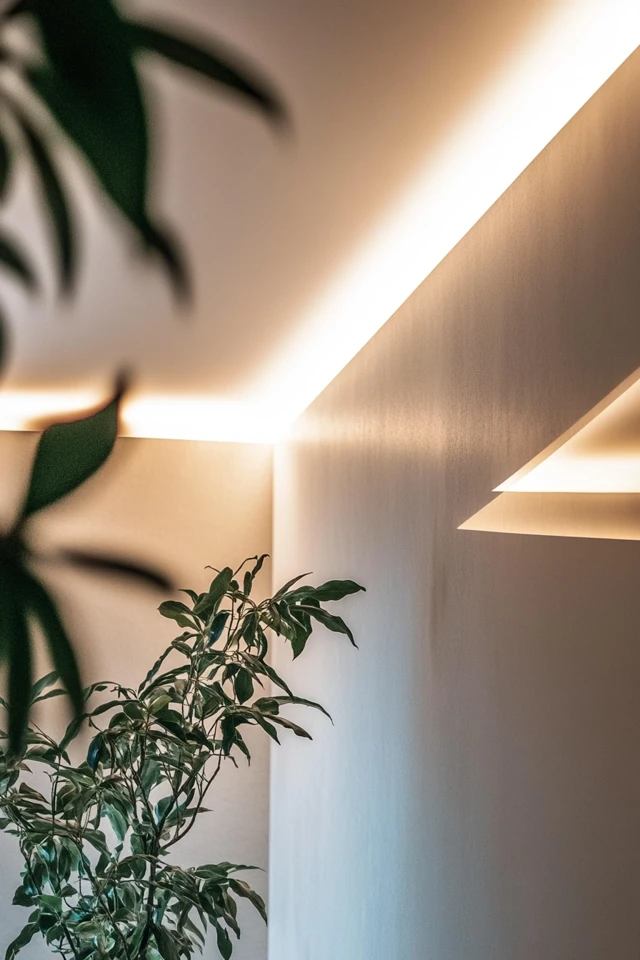Introduction
Lighting is one of the most transformative elements of interior design, especially in bright, open spaces. When I redesigned my open-plan living and dining area, I quickly learned how the right minimalist lighting could completely change the vibe of the room. With sleek designs, clean lines, and an emphasis on natural light, the space became warm, inviting, and beautifully cohesive.
Minimalist lighting isn’t just about functionality; it’s about creating an atmosphere while maintaining simplicity. In bright, open spaces, lighting helps define zones, set moods, and complement the architecture. In this guide, I’ll share the best minimalist lighting ideas to enhance your open spaces and make them shine.
Why Minimalist Lighting Works in Open Spaces
Key Benefits
- Enhances Natural Light: Minimalist fixtures complement rather than compete with daylight.
- Defines Zones: Helps structure open floor plans without adding physical barriers.
- Adds Visual Harmony: Clean designs blend seamlessly into modern interiors.
- Creates Atmosphere: Adjustable lighting sets the mood for any occasion.
1. Embrace Pendant Lights for Focused Zones
Why It Works
Pendant lights create visual anchors in open spaces, defining areas like dining tables or kitchen islands.
How to Style It
- Use oversized pendants in neutral tones for a dramatic yet minimalist look.
- Opt for glass, matte metal, or natural materials like rattan for an understated finish.
- Hang multiple pendants in a linear arrangement above a long table or island.
- Ensure the height is functional—around 30–36 inches above the surface.
2. Install Recessed Lighting for a Clean Look
Why It Works
Recessed lights are flush with the ceiling, offering illumination without adding visual clutter.
How to Style It
- Space the lights evenly across the ceiling for uniform brightness.
- Use dimmable LED bulbs to adjust the light level based on the time of day.
- Pair with other fixtures, like wall sconces or table lamps, for layered lighting.
- Opt for warm white light (2700K–3000K) to maintain a cozy feel in open spaces.
3. Add Floor Lamps for Versatility
Why It Works
Floor lamps are portable and perfect for adding light to specific corners or seating areas.
How to Style It
- Choose minimalist designs with slim profiles, like arc lamps or tripod bases.
- Use a lamp with a matte black or brass finish for a sleek, modern touch.
- Place one next to a sofa or armchair to create a cozy reading nook.
- Opt for lamps with adjustable heads for targeted lighting.
4. Incorporate Track Lighting for Flexibility
Why It Works
Track lighting is customizable, allowing you to direct light exactly where you need it.
How to Style It
- Install track lights in long, open spaces like living rooms or lofts.
- Position the lights to highlight architectural features, artwork, or furniture.
- Choose a minimalist track design in black, white, or metallic finishes.
- Pair with dimmer switches for adjustable ambiance.
5. Use Wall Sconces for Subtle Elegance
Why It Works
Wall sconces free up floor space and provide a soft, diffused glow.
How to Style It
- Install sconces in seating areas or hallways for ambient lighting.
- Choose simple, geometric designs in materials like frosted glass or metal.
- Position sconces at eye level (around 60 inches from the floor) for optimal light distribution.
- Pair with other fixtures to create a layered lighting effect.
6. Opt for Chandeliers to Make a Statement
Why It Works
A minimalist chandelier adds elegance and drama to open spaces without feeling overbearing.
How to Style It
- Use modern designs like linear chandeliers or those with globe-shaped bulbs.
- Hang above a dining table or in the center of a living room for a focal point.
- Stick to simple materials like brushed metal, matte finishes, or clear glass.
- Ensure the size complements the room—large enough to make an impact but not overwhelming.
7. Highlight With LED Strip Lighting
Why It Works
LED strip lighting provides indirect illumination, adding depth and ambiance to a space.
How to Style It
- Install LED strips under cabinets, along shelves, or behind furniture for a subtle glow.
- Use warm white or neutral white tones to complement your decor.
- Incorporate dimmable strips to adjust the brightness for different moods.
- Add strips along architectural elements, like staircases or ceilings, for modern flair.
8. Prioritize Natural Light With Sheer Curtains
Why It Works
Maximizing natural light is a key principle of minimalist design, especially in open spaces.
How to Style It
- Use sheer or lightweight curtains in neutral tones to diffuse sunlight.
- Avoid heavy drapes or blinds that block natural light.
- Arrange furniture to take full advantage of windows and skylights.
- Pair natural light with strategically placed mirrors to reflect and amplify it.
9. Mix Lighting Layers for Depth
Why It Works
Layered lighting ensures your open space is both functional and visually appealing.
How to Style It
- Combine ambient (overhead), task (pendant or table lamps), and accent lighting (sconces or LED strips).
- Use dimmers on each layer for complete control over the mood and brightness.
- Focus on highlighting key areas, like the dining table, kitchen island, or artwork.
- Maintain consistency in materials and finishes across all fixtures for a cohesive look.
10. Keep Fixtures Minimal and Cohesive
Why It Works
A cohesive design enhances the simplicity and elegance of minimalist lighting.
How to Style It
- Choose fixtures in matching finishes, such as matte black, brushed brass, or white.
- Opt for simple, geometric shapes like circles, cylinders, or straight lines.
- Avoid overly decorative or ornate designs that disrupt the minimalist aesthetic.
- Ensure the fixtures complement the overall style of your open space.
Picture Gallery

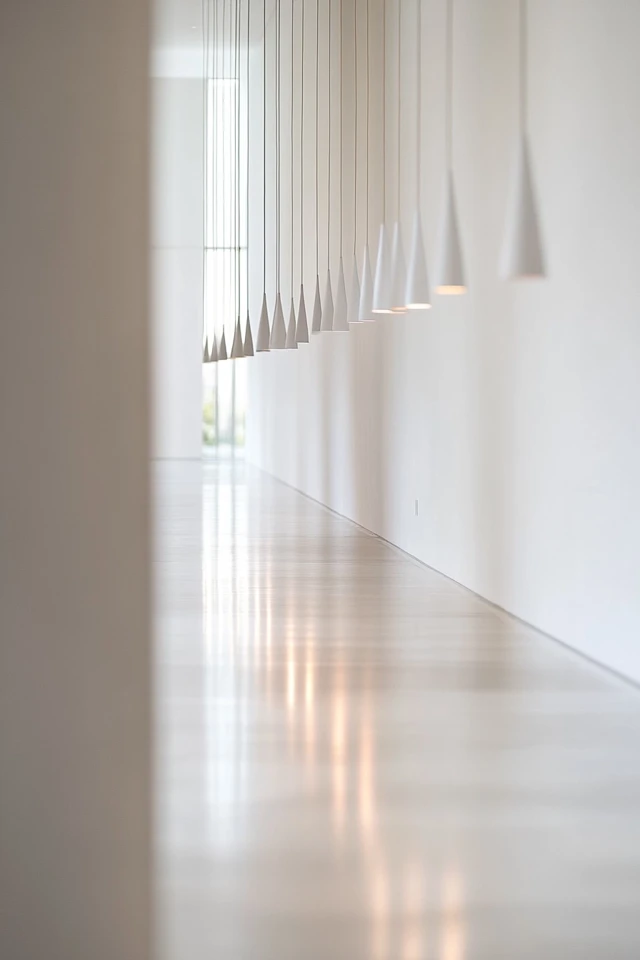
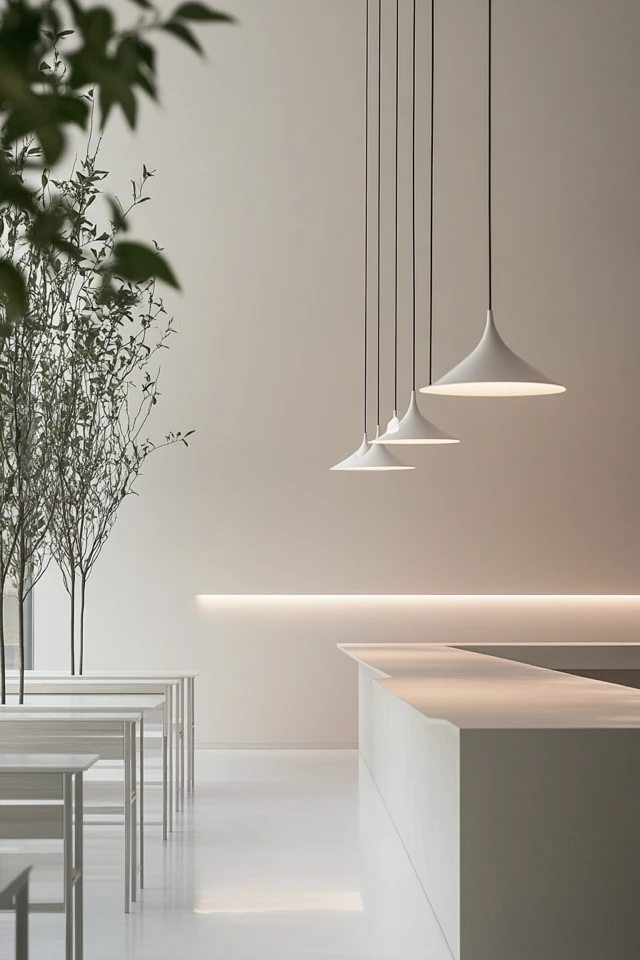
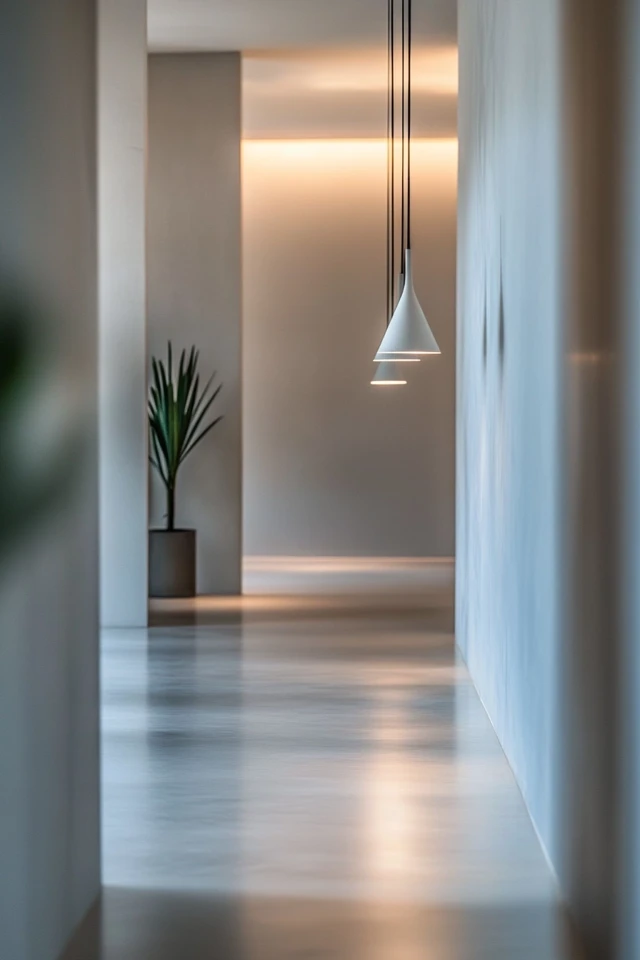
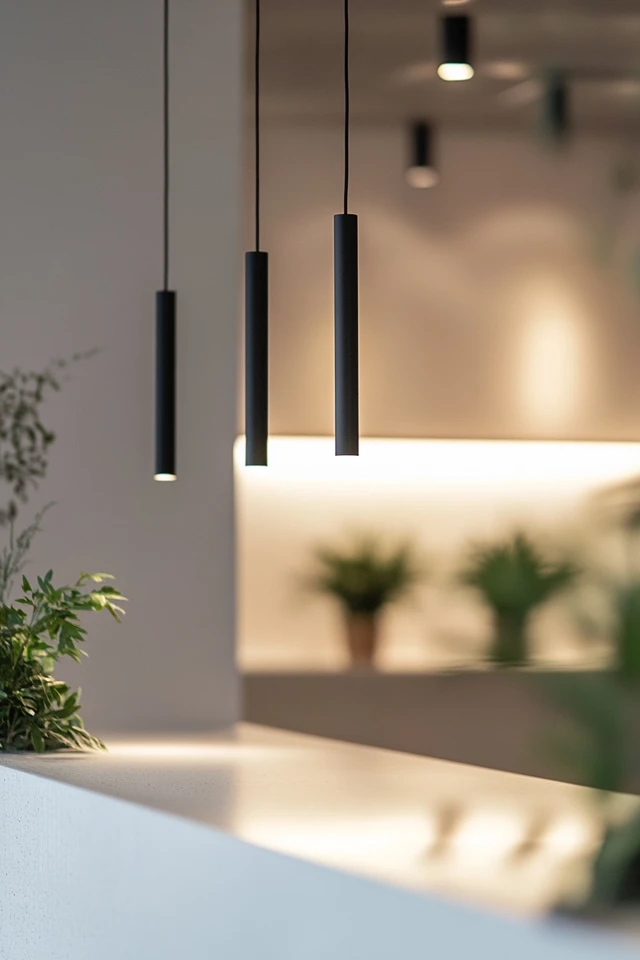
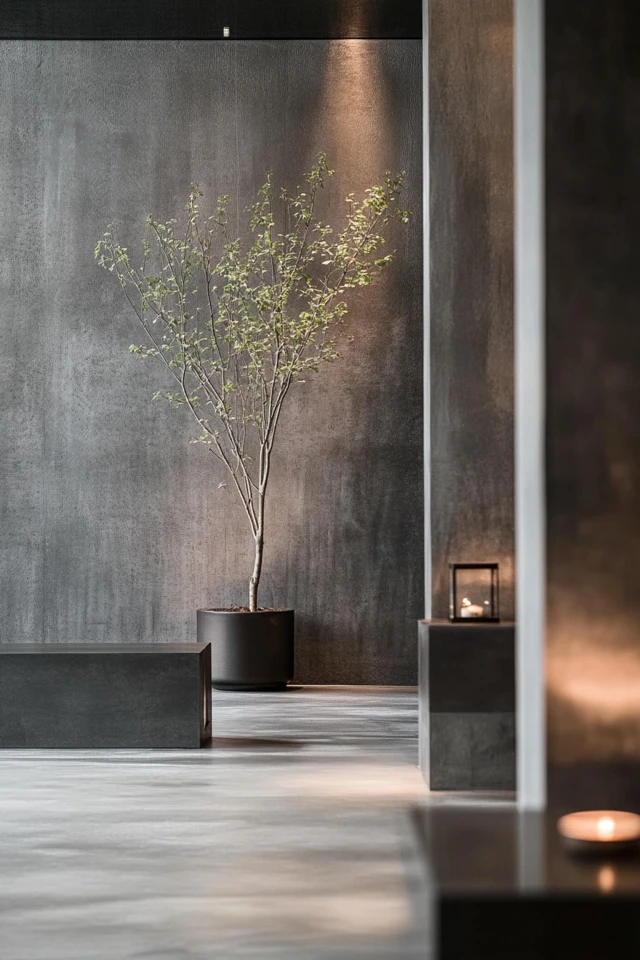
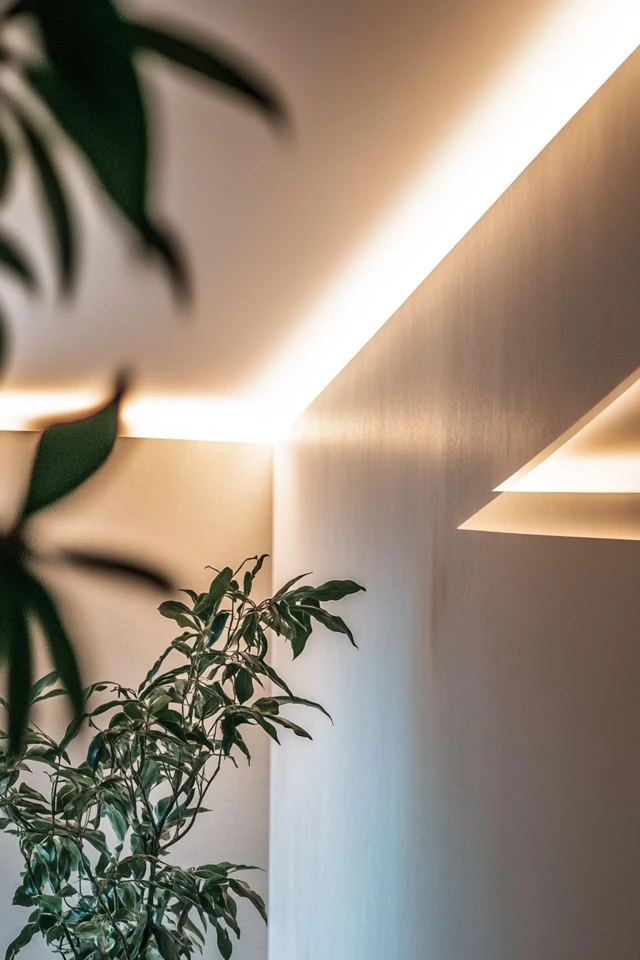
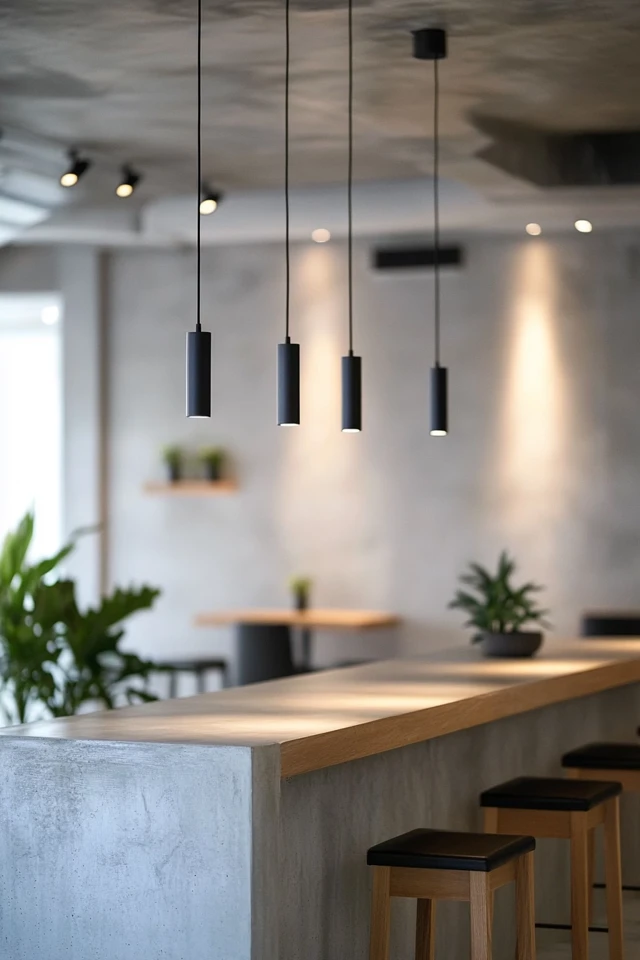
Conclusion
Minimalist lighting is the perfect way to enhance bright, open spaces while maintaining a clean and cohesive aesthetic. Whether you prefer recessed lights, pendant fixtures, or layered lighting, the right choices can define your space, highlight architectural features, and set the mood for any occasion.
What I love most about minimalist lighting is how versatile and timeless it is. It doesn’t compete with your space—it enhances it, making it feel more open, balanced, and inviting. By focusing on clean designs, natural light, and strategic placement, you can achieve a lighting scheme that transforms your home.
So start small. Add a pendant light above your dining table or incorporate LED strips under your cabinets. With each thoughtful addition, you’ll create a space that’s beautifully lit and effortlessly modern.
FAQ
What type of lighting works best in open floor plans?
A mix of pendant lights, recessed lighting, and floor lamps helps define zones and provide balanced illumination in open spaces.
Can minimalist lighting still feel warm and inviting?
Yes! Choose warm white bulbs (2700K–3000K) and incorporate layered lighting to create a cozy atmosphere.
How do I choose the right size light fixture?
For pendants and chandeliers, the fixture should be proportional to the space. A general rule is to add the room’s dimensions in feet, convert to inches, and use that as the fixture’s diameter.
Are LED lights a good choice for minimalist lighting?
Absolutely. LED lights are energy-efficient, versatile, and perfect for recessed lighting, strip lighting, or modern fixtures.
Where can I find affordable minimalist lighting?
Check out IKEA, West Elm, CB2, and Target for budget-friendly lighting options that fit the minimalist aesthetic.

